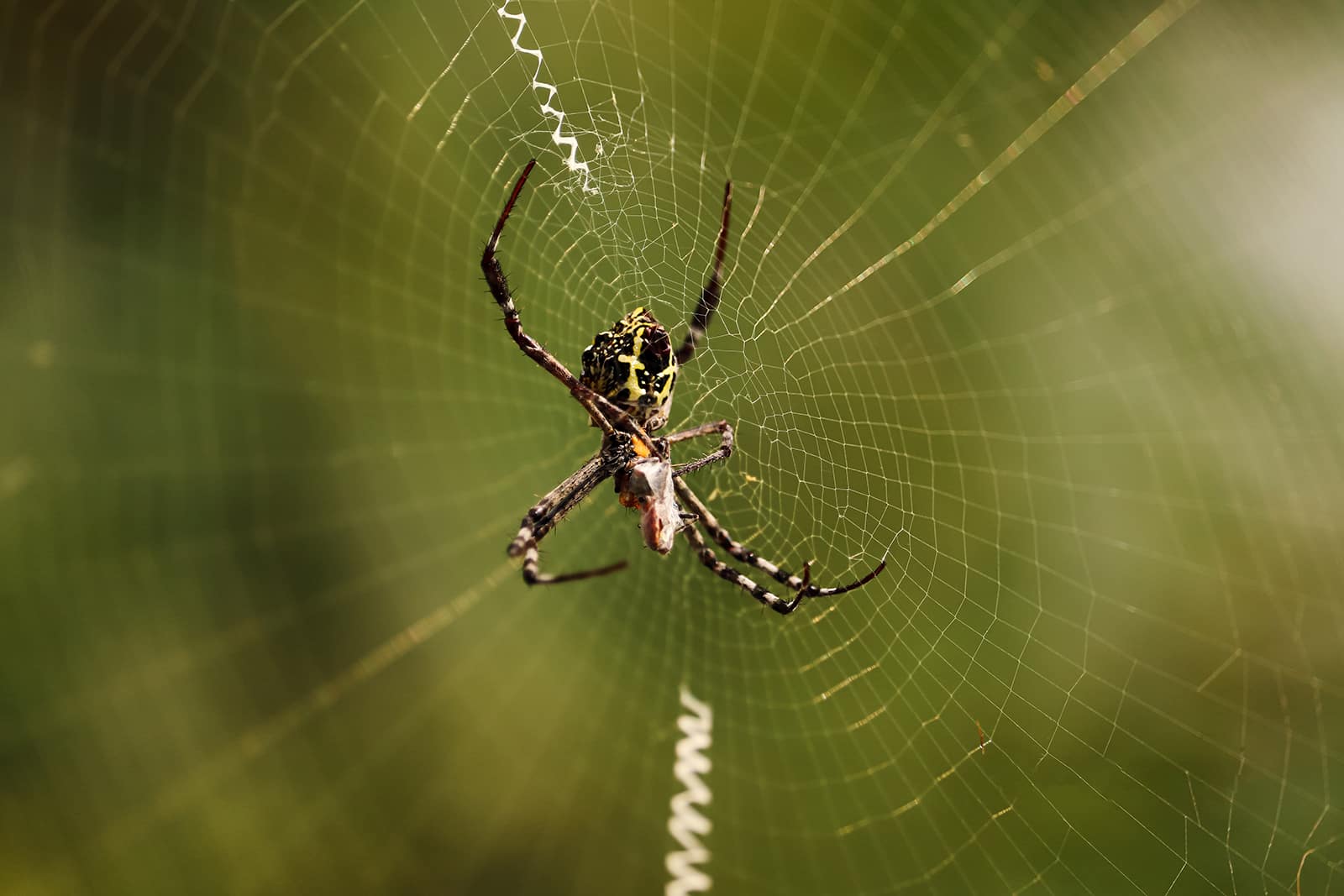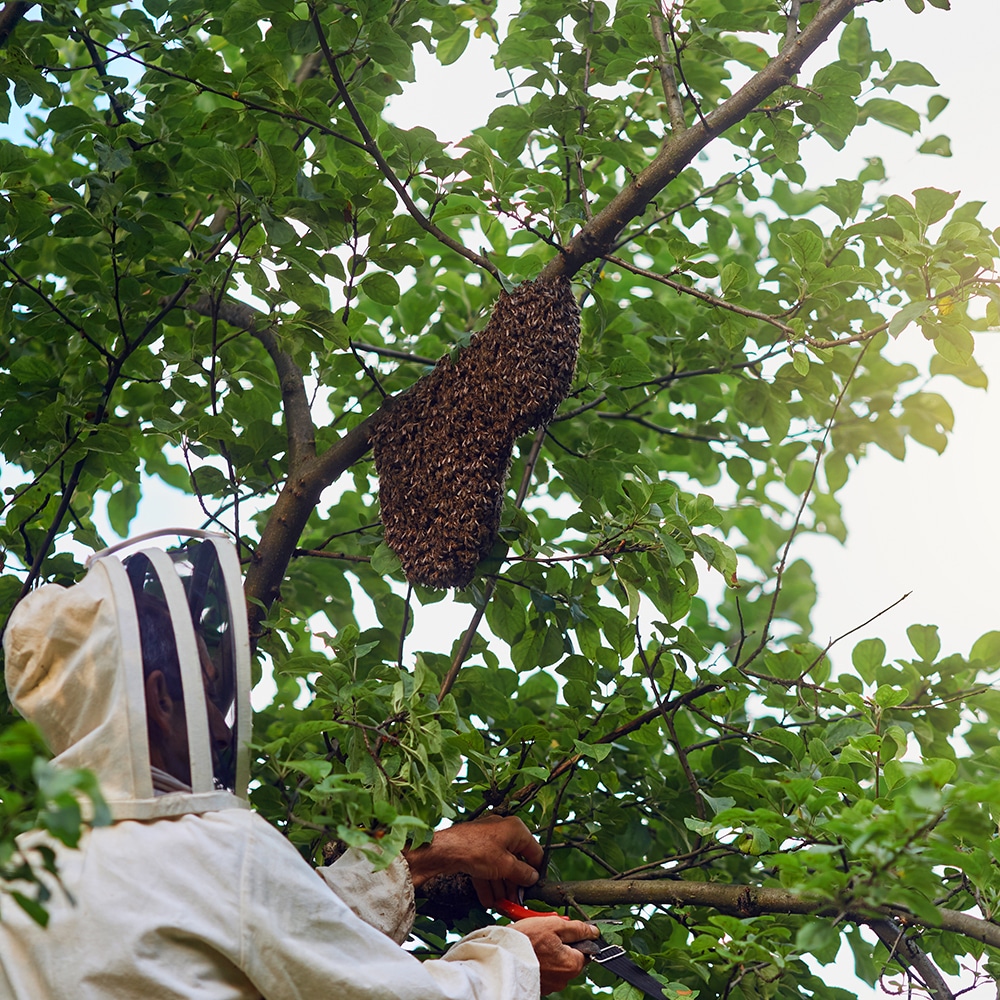
Why Do Spiders Come Back And Why
Why Do Spiders Come Back And Why On The Central Coast NSW. Responsive Proactive Solutions. Detail-focused for lasting results. Call Adam on 0431 222 894
Struggling with how to get rid of fleas on pets? You’re not alone. Fleas can drive pets and owners crazy. For folks on the Central Coast NSW, Vital Pest Control can help. Vital Pest Control provides reliable and trustworthy services. Let’s dive into effective flea control methods.
How to Tell if Your Pet Has Fleas
Scratching is a major clue. Look for tiny black specs or red bumps on the skin. These signs often indicate fleas. Check your pet’s bedding and favourite spots for more evidence. Act fast if you spot any signs.
Best Flea Treatments for Dogs and Cats
Choose treatments that suit your pet’s size and age. Topical solutions work well for immediate relief. Oral medications offer long-term protection. Consult your vet for tailored advice. A fast response ensures your pet stays flea-free.
How Often Should You Treat Pets for Fleas
Regular treatment is key. Monthly treatments prevent infestations. Year-round care is crucial, even in cooler months. Consistent action keeps fleas at bay. Protect your home and pet from these pesky invaders.
Are Flea Collars Effective for Flea Control
Flea collars offer convenience. They can repel and kill fleas. However, their effectiveness varies. Combine collars with other treatments for best results. Always read the labels and follow instructions carefully.
How to Bathe a Pet to Remove Fleas
Use warm water and pet-safe soap. Start at the neck to prevent fleas from escaping. Rinse thoroughly to remove all soap and fleas. Bathing soothes irritated skin. Follow with a flea comb for extra removal.
Best Flea Shampoos for Pets
Choose shampoos with natural ingredients. Look for products that soothe and treat. Avoid harsh chemicals, especially for sensitive pets. Quality over quantity ensures your pet’s comfort and safety.
How to Comb Fleas Out of Pet Fur
Use a fine-toothed flea comb. Work from head to tail, checking the comb frequently. Dip it in soapy water to kill trapped fleas. This method is safe and chemical-free. Regular combing helps detect fleas early.
Why Some Flea Treatments Do Not Work
Resistance to certain treatments is common. Incorrect application reduces effectiveness. Always follow guidance for best results. Tailor approaches to your pet’s needs. Vital Pest Control can offer expert advice on the Central Coast NSW.
Discover how we can help you today! Get in touch at Contact

Fleas can cause discomfort and health problems for your pet. Recognising the signs of a flea infestation early can help you take swift action to protect your furry friend. Here are some clear indicators that your pet might have fleas.
Excessive Scratching or Biting
If your pet is scratching or biting more than usual, it could be a sign of fleas. Fleas cause skin irritation, leading pets to scratch persistently. Watch for this behaviour as it may indicate a problem needing attention.
Visible Flea Dirt
Flea dirt, or flea faeces, looks like tiny black specks on your pet’s fur. Comb through your pet’s coat with a fine-tooth comb and check for these specks. If you notice them, it is likely your pet has fleas.
Red or Inflamed Skin
Flea bites can cause red, inflamed patches on your pet’s skin. These irritated areas may be most noticeable on the belly, tail, or neck. Regularly check these areas when grooming your pet.
Hair Loss
In severe cases, fleas can cause your pet to lose hair, particularly around the tail and neck. This hair loss results from excessive scratching or allergic reactions to flea bites.
Fleas can be a real nuisance for pets and their owners on the Central Coast NSW. These pesky critters not only cause discomfort but can also lead to serious health issues. Selecting the right flea treatment is crucial for your dog or cat’s health and happiness. Let’s explore some of the best options available.
Topical Treatments
Topical treatments are a popular choice among pet owners. Applied directly to the skin, these treatments kill fleas on contact. They offer long-lasting protection, usually for about a month. Brands like Frontline Plus and Advantage are widely recommended by vets. They work by targeting flea life stages, preventing eggs from hatching and killing adult fleas. This method is effective and easy to apply, making it a favourite for many pet owners.
Oral Medications
Oral medications provide another effective solution. These tablets are easy to administer and work from the inside out. Products like NexGard and Bravecto offer protection for up to three months. They rapidly kill fleas after they bite, stopping infestations in their tracks. Oral treatments are ideal for pets with sensitive skin or those who frequently bathe, as water does not affect their efficacy.
Flea Collars
Flea collars offer yet another layer of defence. These collars release active ingredients that repel and kill fleas. Brands such as Seresto provide protection for up to eight months, making them cost-effective and low-maintenance. They are particularly suitable for outdoor pets, as they continuously guard against fleas. However, it’s essential to ensure the collar fits correctly for maximum effectiveness.
Fleas can be a persistent issue for pets on the Central Coast NSW, making regular treatment essential. Understanding how often to treat pets for fleas is crucial for maintaining their health and comfort. By establishing a consistent treatment routine, you can effectively manage flea populations and protect your furry friends.
Identifying the Right Frequency
The frequency of flea treatments depends on the product used and your pet’s lifestyle. Most topical treatments require monthly application, while oral medications can vary from monthly to quarterly. Always follow the manufacturer’s guidelines to ensure effectiveness. For pets frequently outdoors or in contact with other animals, more frequent treatments might be necessary.
Considering Environmental Factors
Environmental conditions on the Central Coast can influence flea activity. Warmer months typically see a rise in flea populations, so increasing treatment frequency during this time can be beneficial. Regularly vacuum your home and wash pet bedding to minimise infestations. Consider consulting a local pest control expert for comprehensive advice tailored to your location.
Monitoring Your Pet’s Health
Regularly check your pet for signs of fleas, such as itching or red spots. If you notice these symptoms between treatments, it may be time to adjust the treatment schedule. Consult your vet if you are unsure, as they can provide guidance based on your pet’s specific needs and health status.
Flea collars have been a go-to for many pet owners looking to manage flea infestations. But how effective are they really for flea control? Understanding their benefits and limitations can help pet owners on the Central Coast of NSW make informed decisions for their beloved pets.
How Flea Collars Work
Flea collars release chemicals that either repel or kill fleas. These chemicals spread through a pet’s fur and skin, creating a protective barrier. Some collars aim to stop fleas at different life stages, while others primarily target adult fleas. The effectiveness largely depends on the collar’s active ingredients and how consistently they are released.
Advantages of Flea Collars
Convenience is a significant advantage of flea collars. They are easy to use, requiring minimal effort from pet owners. Once fitted, they continue to work without the need for frequent reapplication. Some collars offer protection for several months, making them a cost-effective solution for long-term flea control.
Limitations and Considerations
Despite their ease of use, flea collars might not be the best standalone solution. Some pets experience skin irritation or allergic reactions. Moreover, collars may not protect all areas of the body, potentially leaving some spots vulnerable to fleas. For severe infestations, combining flea collars with other treatments may be necessary.
In conclusion, while flea collars can be a useful part of a comprehensive flea control strategy, they should be chosen based on individual pet needs and infestation levels. Consulting with pest control experts on the Central Coast can provide further guidance tailored to your situation.
Bathing your pet is vital to tackle a flea infestation effectively. On the Central Coast NSW, where fleas can be persistent, a thorough wash is crucial to provide relief for your furry friend. This process not only removes fleas but also soothes your pet’s skin, making it an essential step in flea control.
Choosing the Right Shampoo
Pick a flea-specific shampoo that suits your pet’s coat. These shampoos contain ingredients designed to kill fleas on contact. Avoid human shampoos as they may irritate your pet’s skin. Ensure you select a product that is appropriate for your pet’s species and age. Consult your vet if unsure.
Preparing Your Pet
Before starting the bath, brush your pet to remove any tangles. This helps the shampoo penetrate the coat better. Make sure your pet is calm, as a relaxed pet will make the process smoother. Gather all necessary supplies within reach to avoid interruptions.
Bathing Process
Wet your pet thoroughly with lukewarm water. Apply the flea shampoo and gently massage it into the coat, focusing on areas like the neck and tail, where fleas often hide. Leave the shampoo on for the recommended time before rinsing thoroughly to ensure all fleas and eggs are removed.
Post-Bath Care
Dry your pet with a towel or pet dryer. Brush their coat to remove any remaining fleas. Consider using a flea comb to check for any missed pests. After bathing, maintain your pet’s environment by cleaning bedding and vacuuming regularly to prevent re-infestation.
Fleas are a common nuisance for pets, especially in the Central Coast NSW area. Choosing the right flea shampoo is crucial for effectively managing these pesky parasites. Not only do these shampoos help eliminate fleas, but they also soothe irritated skin. Selecting the best one requires understanding your pet’s specific needs and the shampoo’s benefits.
Natural Ingredients for Gentle Care
When searching for a flea shampoo, consider those with natural ingredients. Shampoos containing essential oils such as lavender or peppermint not only kill fleas but also provide a calming effect for your pet. These natural options are less likely to irritate sensitive skin, making them ideal for pets prone to allergies.
Medicated Shampoos for Severe Infestations
For pets suffering from severe flea infestations, medicated shampoos are often the best choice. These contain active ingredients like pyrethrin, which effectively target fleas at all life stages. Medicated options may offer faster relief, but be sure to follow usage instructions to avoid skin irritation.
Moisturising Shampoos for Dry Skin
Fleas can dry out your pet’s skin, leading to discomfort. Opt for moisturising flea shampoos that include ingredients like oatmeal or aloe vera. These shampoos not only tackle fleas but also hydrate and soothe your pet’s skin, promoting overall coat health.
Combing fleas out of your pet’s fur is a crucial step in managing flea infestations. This method is not only effective but gentle on your pet. Here’s how to do it right.
Selecting the Right Comb
Choose a flea comb with fine, closely spaced teeth. This design traps and removes fleas efficiently as you glide it through your pet’s coat. Ensure the comb has a comfortable handle for easy maneuvering during grooming sessions.
Preparing Your Pet
Before combing, find a quiet place where your pet feels at ease. Calming your pet is essential, as a relaxed animal makes the process smoother. Have a bowl of soapy water nearby to trap and kill any fleas you catch.
Combing Technique
Start at the top and work towards the tail, moving in small sections. Pay special attention to areas where fleas love to hide, like behind the ears and under the legs. After each stroke, dip the comb in soapy water to remove fleas and eggs.
Post-Combing Care
After combing, give your pet a gentle bath to eliminate any remaining fleas. Regularly clean the comb and maintain your pet’s hygiene to prevent future flea issues. Consistent care and attention keep fleas at bay.
Flea treatments sometimes fail on the Central Coast due to various reasons. Pet owners might notice persistent flea issues despite regular treatments. Understanding these factors can help address the problem effectively.
Incorrect Application
One of the main reasons flea treatments don’t work is incorrect application. Many products require precise application to be effective. For instance, spot-on treatments need to be applied directly to the skin, not just the fur, to ensure absorption. Missing this critical step can lead to ineffective results.
Resistance to Treatment
Fleas can develop resistance to certain insecticides over time. This resistance means that once-effective treatments may no longer kill fleas on your pets. It is essential to rotate products or consult with a vet to find newer options that fleas haven’t adapted to yet.
Environmental Infestation
Even if a pet is treated, an infested environment can lead to re-infestation. Treating only the pet ignores fleas in carpets, bedding, and outdoor areas. Comprehensive treatment must include both pets and their surroundings to break the flea life cycle effectively.
Addressing these issues can significantly improve flea control efforts, ensuring that both pets and homes on the Central Coast remain flea-free.
Breaking the flea life cycle is crucial to ensuring your pets remain flea-free. Fleas can cause discomfort and health issues for pets and infest homes if not controlled. By understanding and interrupting their life cycle, you can effectively manage and prevent infestations. This guide offers practical steps to break the flea life cycle on the Central Coast, NSW.
Understanding the Flea Life Cycle
Fleas undergo four stages: egg, larva, pupa, and adult. Each stage requires different strategies to tackle. Eggs are laid on pets and fall into the environment, while larvae hide in carpets or bedding. Pupae are resilient, waiting for the right conditions to emerge as adults. Knowing these stages helps target fleas effectively.
Regular Pet Treatment
Use vet-recommended flea treatments consistently. Spot-on solutions or oral medications kill adult fleas and prevent eggs from hatching. Regularly treating your pets is essential in breaking the cycle, stopping fleas from reproducing and laying more eggs.
Environment Management
Vacuum carpets and wash pet bedding frequently to remove eggs and larvae. Consider using insect growth regulators to disrupt flea development. Treat outdoor areas where your pets spend time, as fleas often thrive in warm, shady spots.
Consult Professionals
For severe infestations, contact a pest control service like Vital Pest Control on the Central Coast, NSW. Experts can assess your situation and provide tailored solutions, ensuring long-term protection against fleas.
Dealing with a flea outbreak on multiple pets can be challenging, particularly in the Central Coast NSW area where the climate often favours these pesky insects. Effective treatment requires a strategic approach to ensure all pets are protected and your home remains flea-free.
Synchronise Treatments for All Pets
When treating a flea outbreak, synchronising treatments for all your pets is essential. Each animal should receive appropriate flea control measures on the same day to prevent reinfestation. Options include topical treatments, oral medications, or flea collars. Consult your vet to choose the best option based on your pets’ needs.
Regularly Wash Bedding and Toys
Fleas often hide in pet bedding and favourite toys, making regular washing crucial. Use hot water to clean all fabrics and consider adding vinegar for extra flea deterrent power. Dry items thoroughly in a hot dryer to ensure no fleas or eggs survive. This step helps break the flea lifecycle.
Maintain a Clean Home Environment
Vacuum frequently, focusing on carpets, rugs, and furniture where fleas might lurk. Dispose of vacuum bags immediately to prevent fleas escaping. Consider using a flea spray or fogger for comprehensive control in severe outbreaks. Keeping your home clean reduces the likelihood of fleas breeding and spreading.
Fleas can make life miserable for your furry friends. Thankfully, natural flea treatments offer a gentle yet effective solution. Vital Pest Control on the Central Coast NSW can guide you through these natural approaches to keep your pets flea-free.
Herbal Flea Collars
Herbal flea collars infused with essential oils like lavender or eucalyptus provide a natural barrier against fleas. These oils emit a scent that repels fleas, reducing the chances of infestation. These collars are a simple and effective way to protect your pet without harsh chemicals.
Apple Cider Vinegar
Apple cider vinegar is a versatile household item that can deter fleas. Adding a small amount to your pet’s water can balance their pH levels, making them less attractive to fleas. You can also use it as a spray by mixing it with water for a topical application to ward off these pesky insects.
Diatomaceous Earth
Diatomaceous earth is a natural powder that can be sprinkled on your pet’s coat. It works by dehydrating and killing fleas. Ensure you use food-grade diatomaceous earth for safety. Dust it lightly on your pet, then brush through their fur to help rid them of fleas.
By choosing natural flea treatments, you can protect your pets in a gentle, eco-friendly way while ensuring their comfort and well-being.
Fleas are a persistent nuisance for pets, especially in Central Coast, NSW. Keeping fleas at bay requires a proactive approach and consistent effort. Here are some effective strategies to ensure your pet remains flea-free long term.
Regular Grooming and Bathing
Consistent grooming is crucial in preventing fleas. Brush your pet’s coat regularly to remove any lurking fleas or eggs. Bathing your pet with a vet-approved flea shampoo can also reduce infestation. This routine not only keeps your pet clean but also provides a chance to check for any signs of fleas.
Maintain a Clean Environment
A clean home is vital. Vacuum carpets, upholstery, and pet bedding frequently to eliminate flea eggs and larvae. Wash your pet’s bedding in hot water weekly. Keeping your home clean reduces the likelihood of fleas breeding and thriving indoors.
Use Preventative Treatments
Invest in regular flea treatments recommended by a vet. Monthly topical treatments or oral medications can effectively keep fleas off your pet. These treatments work by disrupting the flea life cycle, preventing eggs from maturing into adult fleas.
Consult a Pest Control Professional
For serious infestations, consider hiring a pest control expert. Companies like Vital Pest Control on the Central Coast can offer tailored solutions to safeguard your home and pets from fleas. Professional services provide long-term peace of mind, ensuring your environment is inhospitable to fleas.
When it comes to managing fleas on pets, oral flea medications have become a popular choice among pet owners on the Central Coast. These medications promise an effective solution, but many pet owners are left wondering about their safety.
Understanding Oral Flea Medications
Oral flea medications are systemic treatments that kill fleas by entering your pet’s bloodstream. Once a flea bites, it ingests the medication, leading to its death. This method ensures fleas are targeted directly and begin to die off quickly, offering relief for both pets and owners. However, understanding how these medications work is crucial when considering their use.
Potential Side Effects
While generally safe, some pets may experience side effects. Common issues include gastrointestinal upset, such as vomiting or diarrhoea. In rare cases, pets might show signs of lethargy or skin irritations. Observing your pet closely after administering new medication is essential to catch any adverse reactions early.
Consulting Your Veterinarian
Before starting any oral flea medication, consulting your vet is vital. They can offer tailored advice based on your pet’s health, age, and existing conditions. A vet will help ensure the chosen medication is both safe and effective, giving you peace of mind.
Oral flea medications can be a safe option for controlling fleas, but always prioritise professional guidance to protect your furry friends.
Flea allergies can turn life into an itchy nightmare for pets on the Central Coast NSW. While getting rid of fleas is crucial, preventing flea allergies is just as important for your pet’s comfort and health. By taking proactive steps, you can help your furry friends avoid the misery associated with flea bites.
Regular Flea Treatment
Implementing a consistent flea treatment routine is the first step in preventing flea allergies. Choose a reliable flea control product suitable for your pet’s size and type. Monthly topical treatments or oral medications are effective options. Consult your vet to ensure the product is safe and effective for your specific pet.
Maintain a Clean Environment
Regular cleaning can disrupt flea life cycles. Vacuum your home frequently, especially areas where your pet spends time. Washing pet bedding in hot water weekly can eliminate fleas and eggs. Keeping the yard tidy by mowing and removing debris can also reduce flea habitats.
Monitor and Groom Your Pet
Regular grooming helps spot fleas early. Comb your pet with a flea comb and look for signs of fleas or flea dirt. Bathing with pet-friendly flea shampoos can provide additional protection. Observing your pet’s skin health can help address any allergic reactions promptly.
Fleas can quickly turn your pet’s bedding into a hotspot for infestation. These pesky parasites not only irritate pets but also spread throughout your home. Addressing fleas in pet bedding is crucial to maintaining a flea-free environment on the Central Coast, NSW.
Regular Washing
Wash pet bedding frequently in hot water to eliminate fleas and their eggs. Use a pet-friendly detergent to ensure no harmful residues remain on the fabric. Hot water effectively kills fleas, breaking their life cycle and preventing further spread.
Vacuum Thoroughly
Vacuum around the bedding area regularly to remove fleas, larvae, and eggs. Pay special attention to corners and crevices where fleas love to hide. Dispose of the vacuum bag or clean the container immediately to ensure fleas don’t escape back into your home.
Natural Sprays
Create a natural flea spray using ingredients like vinegar or lemon juice. Spritz the bedding lightly, ensuring it dries completely before the pet uses it again. These natural solutions repel fleas without introducing harsh chemicals to your pet’s resting area.
Sunlight Exposure
Place pet bedding outside in direct sunlight whenever possible. Fleas dislike heat and sunlight, which can effectively reduce their numbers. Regular exposure to sunlight also helps keep bedding fresh and reduces flea infestation risks.
Please leave your details in the form and we will call you back the same day.
So that we can process your enquire efficiently please leave as many details as possible and upload any relevant images. (.jpg and .png format)

Why Do Spiders Come Back And Why On The Central Coast NSW. Responsive Proactive Solutions. Detail-focused for lasting results. Call Adam on 0431 222 894

Building a Long Term Residential Pest Protection Plan For Home Owners On The Central Coast NSW. Responsive Proactive Solutions. Detail-focused for lasting results. Call Adam on 0431 222 894

How to Protect Your Home from Wasp Infestations On The Central Coast NSW. Responsive Proactive Solutions. Detail-focused for lasting results. Call Adam on 0431 222 894